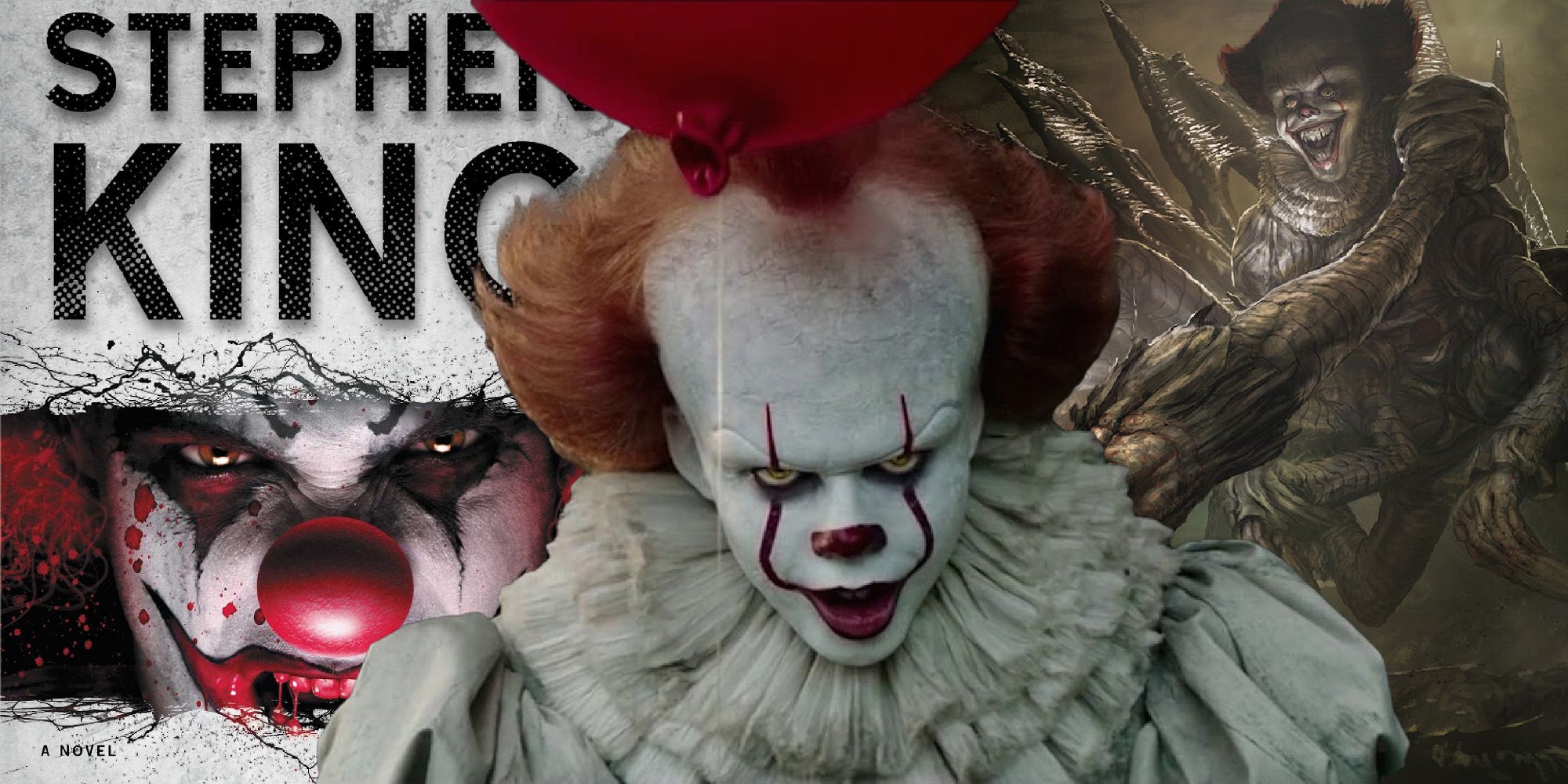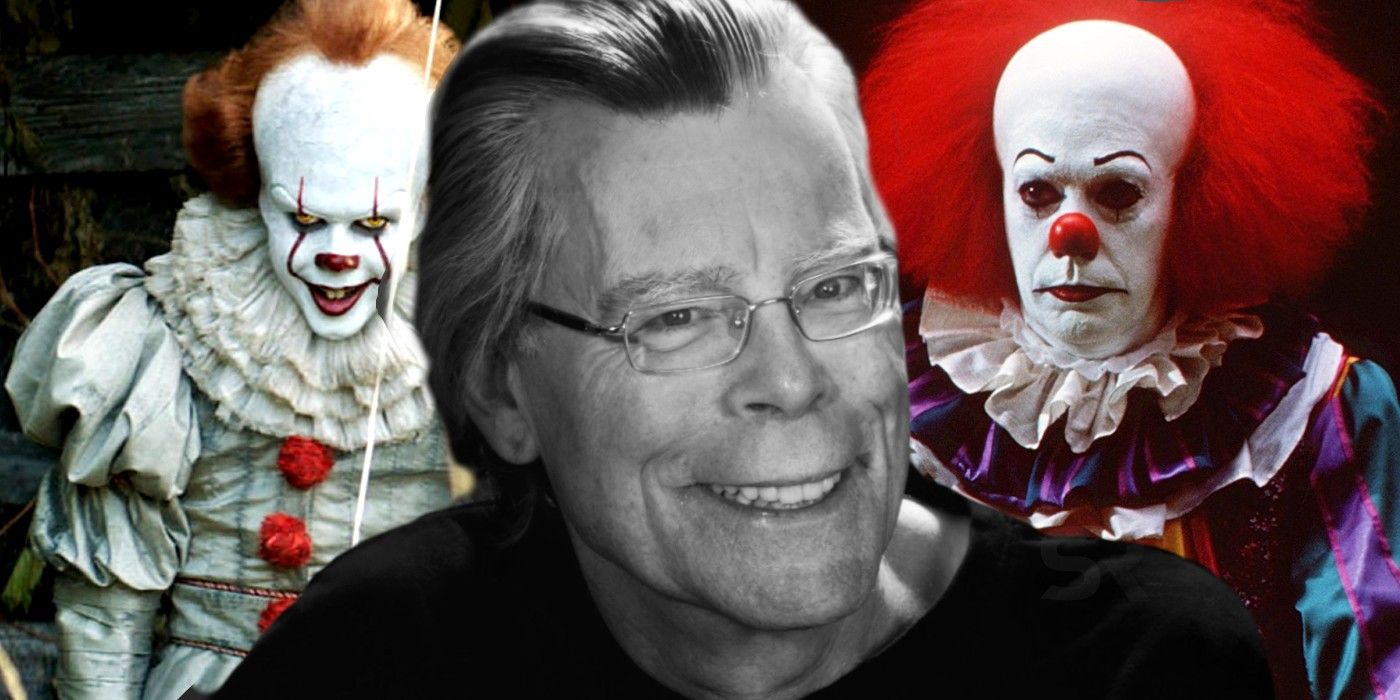Throughout Stephen King's It, Pennywise is referred to as a male, but author Stephen King pulled a fast one on readers in the It book ending by revealing the creature's true form was a pregnant spider, implying that it is, in fact, biologically female. So why has Pennywise exclusively been played by male actors in It's television and movie adaptations? And is the character actually male, female, or something else entirely?
Pennywise was always going to be a difficult character to bring to life, as there are many confusing elements around his mythos. The shapeshifting creature terrorized the residents of Derry, Maine, every 27 years by taking on the form they fear the most. The story's main group, the Losers' Club, figures out that Pennywise has the power to do this because he's an extra-terrestrial creature that's millions of years old. So in a way, Pennywise's origins almost allow him to transcend gender norms altogether.
It is such a dense book that many details needed to be let go for the television and movie adaptations — Pennywise's fluid gender and complex mythology were part of the changes. The reveal of Pennywise's pregnancy may have been an essential moment in the It book ending, but there's a simple reason it was never shown on the screen. It would've just been too difficult to explain.
How Is Pennywise Pregnant In The It Book Ending?
It's clearly established in the It book ending that Pennywise most commonly appears to the Losers in the shape of a clown. As the creature is referred to as "he" in this form, it can be assumed that the clown is male. Since that clown is Pennywise's most used form, it makes sense that both adaptations would depict him as a clown. So naturally, it would make sense for a male actor to be cast in the role of Pennywise despite the book's pregnancy reveal. In fact, neither adaptation of It felt the need to defend or comment on their decision to cast a male actor to play Pennywise — it just seemed like the obvious choice. Since It's spider-form pregnancy was left out of both movies and the TV miniseries, it wasn't one of Pennywise's many forms that needed further examination unless people are familiar with the It book ending.
While bringing the killer clown to life on screen was simple, there were plenty of elements of the novel that were not. It is more than 1,100 pages long, and movie and television adaptations must condense their source material to ensure they work for the screen. So, parts of It had to go. King's novel famously gets a little out there — a prime example being that Pennywise's enemy is a giant turtle. Both adaptations needed to cut details that were too weird or confusing to be commercially successful. Suddenly revealing that a male clown was a pregnant spider creature at the end of It would have confused people.
However, 2019's It Chapter Two dropped several Easter eggs referring to the details from the book that had to be cut. This proved that the adaptation respected its roots and the people who read the original story, even though it didn't always explain the more confusing elements of King's story in detail. Besides Pennywise's pregnant spider form, there were other elements of the It book ending that were left out.
It Movie Vs. Book: Other Differences Between The It Reboot And The Book
When it comes down to the It book ending, there's a lot that's been changed for the movie adaptation — and some of those are for the better. There's only so much time a movie offers, so certain things must be changed or left out of literary adaptations. While It: Chapter One and Two do a decent job of capturing the book's overall heart and themes, plenty of small details were changed or left out. For example, Richie Tozier isn't gay in the It novels – at least not explicitly. While it's arguable that the subtext suggests that Richie may be hiding his true sexuality, there isn't enough outright evidence linking these to the change made for the movie. While some relationships were exaggerated, others weren't explored in-depth at all. Henry Bowers' dad is a cop in the film, while in the books, he's a racist and abusive farmer. Patrick Hockstetter, one of Bowers' cronies who Owen Teague plays, has a dubious backstory in the books that includes trying to murder his own infant sibling.
While It: Chapter Two got Mike Hanlon's story correct, It: Chapter One switched the characters of Ben Hanscom and Mike. It was always Mike that was intrigued by the history of Derry and spent a lot of time at the library — not Ben. The origins of the Ritual of Chud are also different in the book. In the novel, Maturin the turtle (who pops up in other Stephen King works) is the one who gifted Bill Denbrough with the knowledge behind the ritual. The It book ending also includes a scene that was thankfully left out of the movie, in which the entire group of kids loses their virginity to Beverly Marsh. Finally, another change comes from the time period itself. While It the movie series is based in 1980 and the current day, the book's two time periods are 1957 and 1984.


